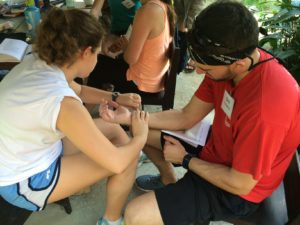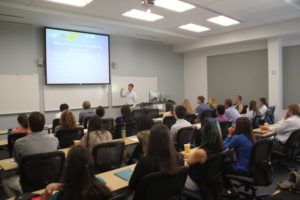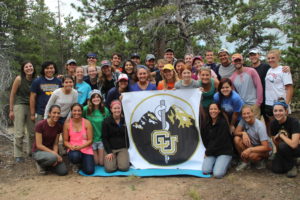By: Alessandra Santiago
Congratulations on making it to the end of our Ready, Set, Apply series! We are grateful to have brought you useful content in the lead up to your application cycle, and we wish the pre-med students following this content all the best in preparing their application materials. Given that this cycle has endured more than its fair share of procedural and administrative changes, we hope that the information we have provided in this series has remained relevant and useful to you as you gear up to apply.
In recent months, we have covered the process of writing and editing your Primary Application, how to strategize for your secondaries, when to consider reapplying, and how to prepare for your interviews. If you’ve followed us until this point, you will know that the overall format of the cycle starts with submitting the Primary Application and ends with the interview process. The committee decision following your interview will determine your admission status to a medical school, and it can take up to 2-6 weeks before you receive notice of their decision to accept, reject, or waitlist you at their school.

The application cycle takes a long time to complete. As we have advised in previous articles, pay attention to your timing: if you still have not received any interview invitations in the February after you submit your Primary Application, then it’s time to consider your re-application strategy. If, however, you receive multiple notices for interview requests, respond to each request promptly. For students who receive interview requests after they have already been admitted to the school of their choice, graciously and quickly decline the interview invitation.
If you are still awaiting interview requests by November or December following submitting your Primary Application, you can send an Update Letter to your schools detailing any significant achievements you have experienced since submitting your application. This can include: job promotions, presenting at a research conference, excelling in an extracurricular activity, high grades received in supplementary coursework, or research publications. Submitting this one-page letter may improve your chances of hearing back from your schools if you have significant and novel updates to report.

Typically, medical school interviews will be completed by March following the year you submitted your Primary Application, and acceptances will have already begun arriving at that point. Respond to your acceptances within 1-2 weeks of receiving them. You can pay a deposit to hold your place at that school (the amount is around $100 per school). Until April 30, you can hold your place at multiple schools; after April 30, you must only hold one acceptance, but you can still be on the waitlist for other schools after that point.
For schools that you are certain you will not attend, withdraw your acceptance quickly. Some of these schools will refund your deposit, some may not. If you are still deliberating about whether or not to withdraw your acceptance, try to attend a “Second Look” weekend that some medical schools offer in the Spring as a means of enticing students to commit to their school. This is a great time to ask your questions of current students and faculty that may help you decide about the school to which you choose to commit.
It is possible to hold your acceptance at a school past April 30 and still remain on the waitlist for your other ‘dream’ schools. It is advisable between April 30 and the start of the academic year in the Fall to submit a Letter of Intent to your waitlisted schools. This is a letter that is a serious indicator of commitment, and you should submit one only if you would attend that school if granted an acceptance. When writing this letter, you should be very specific about why this school is your first choice (and don’t mince words! Be direct about your interest in that school). What will the school give to you, and what will you give back to the school? You may also choose to include here any significant achievements and activities you have engaged in to address any weaknesses in your application.

Finally, after you have been accepted at your waitlisted dream school and declined acceptance at any other schools, all that remains is the White Coat Ceremony at your school in the Fall. This Ceremony is your initiation into the field of medicine, during which you undertake an oath as well as receive a symbolic token of your chosen profession, like a white coat or a stethoscope. Someday soon, all of your hard work in this application cycle will result in this moment of acceptance into a community of physicians, so keep your focus strong and your commitment to the path steady.
Between now and the White Coat Ceremony, take the time to bolster your credentials, study for the MCAT, ace your final exams, and do what you must to make yourself the most competitive applicant you can be. If you are ever at a loss for experiences to pursue or other questions you may have about becoming a more competitive applicant, head over to our Getting into Medical School: Tips and Tricks blog for key insights from C.U. Anschutz Medical School Admissions Officers about traits and experiences we think are worthwhile in prospective med school students.
Thank you for your continued support, feedback, and interest in our series! We are glad to have accompanied you during the year building up to the application cycle. We wish you all the best in your endeavors.
| Assignment #20: Pat yourself on the back for completing the Ready, Set, Apply series! Between interview invitations and acceptances, think about how you will demonstrate your continued commitment to your clinical, academic, and research experiences to show progress and growth. Head over to our Getting into Medical School: Tips and Tricks blog for more med school admissions hacks. |
If you want to learn more about navigating the Pre-Med journey, check out our Getting Into Med School: Tips and Tricks Blog.
